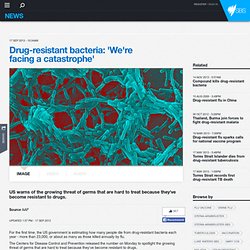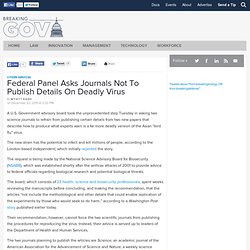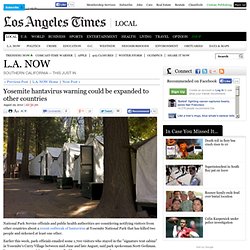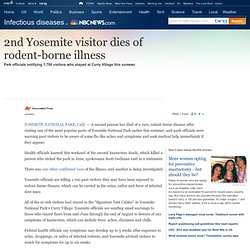

MERS outbreak hits 30% death rate as pandemic spreads in Saudi Arabia. Drug-resistant bacteria: 'We're facing a catastrophe' For the first time, the US government is estimating how many people die from drug-resistant bacteria each year - more than 23,000, or about as many as those killed annually by flu.

The Centers for Disease Control and Prevention released the number on Monday to spotlight the growing threat of germs that are hard to treat because they've become resistant to drugs. Finally estimating the problem sends "a very powerful message," said Dr. Helen Boucher, a Tufts University expert and spokeswoman for the Infectious Diseases Society of America. "We're facing a catastrophe. " Antibiotics like penicillin and streptomycin first became widely available in the 1940s, are considered one of the greatest advances in the history of medicine, and have saved countless lives.
But as decades passed, some antibiotics stopped working against the bugs they previously vanquished. In a new report, the CDC tallied the toll of the 17 most worrisome drug-resistant bacteria. H5N1 Flu Virus Could be 'Engineered' to Put Hundreds of Millions at Risk, Scientist Tells Homeland Security Committee. Chickens were slaughtered at a Hong Kong poultry market in 2008 after some were discovered to have bird flu. (AP Photo/Kin Cheung) (CNSNews.com) - If H5N1 bird flu, which has a 60-percent fatality rate, were engineered to spread like seasonal flu, hundreds of millions of lives would be at risk, a scientist told the Senate Homeland Security Committee on Thursday. “What happens if a mammalian transmissible H5N1 flu starts to spread?
" Thomas Inglesby, CEO and director of the Center for Biosecurity at the University of Pittsburgh Medical Center, asked rhetorically in his testimony. "Seasonal flu affects 10 to 20 percent of the world every year--as much as a billion people or more," said Inglesby. The National Institute of Health released its policy last month on dual-use research, which is designed to implement recommendations made in a 2003 National Academy of Sciences report titled, “Biotechnology Research in an Age of Terrorism.”
Federal Panel Asks Journals Not To Publish Details On Deadly Virus. A U.S.

Government advisory board took the unprecedented step Tuesday in asking two science journals to refrain from publishing certain details from two new papers that describe how to produce what experts warn is a far more deadly version of the Asian “bird flu” virus. The new strain has the potential to infect and kill millions of people, according to the London-based Independent, which initially reported the story.
The request is being made by the National Science Advisory Board for Biosecurity (NSABB), which was established shortly after the anthrax attacks of 2001 to provide advice to federal officials regarding biological research and potential biological threats. Their recommendation, however, cannot force the two scientific journals from publishing the procedures for reproducing the virus. Instead, their advice is served up to leaders of the Department of Health and Human Services.
U.S Asks Scientists To Censor Bird Flu Research! Yosemite hantavirus warning could be expanded to other countries. National Park Service officials and public health authorities are considering notifying visitors from other countries about a recent outbreak of hantavirus at Yosemite National Park that has killed two people and sickened at least one other.

Earlier this week, park officials emailed some 1,700 visitors who stayed in the "signature tent cabins" in Yosemite's Curry Village between mid-June and late August, said park spokesman Scott Gediman. Letters were sent to visitors whose email addresses were not on record. Dr. David Wong, an epidemiologist with the National Park Service's Office of Public Health, said Wednesday that officials were still trying to determine how many of those 1,700 visitors were from out of the country. If that number is a "sizable population," he said, officials would consider asking the World Health Organization to help broaden the warning beyond the U.S.
Officials were also working with the U.S. 2nd Yosemite visitor dies of rodent-borne illness - Health - Infectious diseases. YOSEMITE NATIONAL PARK, Calif. — A second person has died of a rare, rodent-borne disease after visiting one of the most popular parts of Yosemite National Park earlier this summer, and park officials were warning past visitors to be aware of some flu-like aches and symptoms and seek medical help immediately if they appear.

Health officials learned this weekend of the second hantavirus death, which killed a person who visited the park in June, spokesman Scott Gediman said in a statement. There was one other confirmed case of the illness, and another is being investigated. Yosemite officials are telling 1,700 past visitors they may have been exposed to rodent-borne disease, which can be carried in the urine, saliva and feces of infected deer mice. Now even TAP WATER isn't safe! Brain-eating amoeba fatal in 99% of cases 'could come from your own faucet' In 2011, two people in Louisiana died after using tap water for nasal irrigationAmoeba known as Naegleria fowleri can infect brain and enters through nasal passageOnce infected, organism is 99% fatal By Beth Stebner Published: 12:37 GMT, 24 August 2012 | Updated: 12:37 GMT, 24 August 2012.
